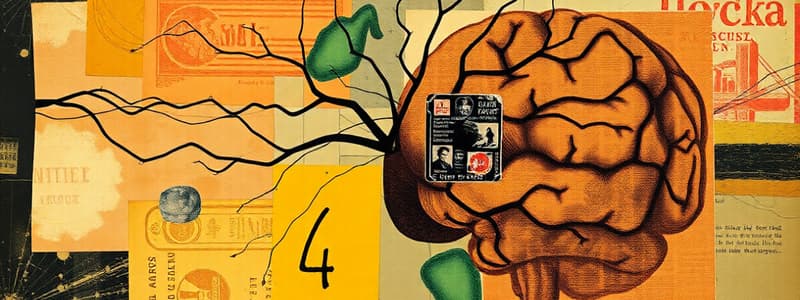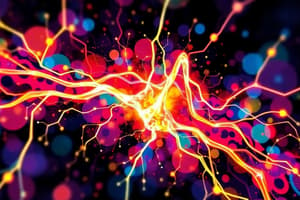Podcast
Questions and Answers
What is the role of the subthalamic nucleus (STN) in relation to the globus pallidus interna (GPi)?
What is the role of the subthalamic nucleus (STN) in relation to the globus pallidus interna (GPi)?
- It promotes movement by inhibiting the GPi.
- It acts as a brake on the GPi, leading to a cessation of movement. (correct)
- It has no significant interaction with the GPi.
- It stimulates thalamic output, counteracting GPi inhibition.
What effect does insufficient stimulation of dopamine receptors in the striatum have on the basal ganglia?
What effect does insufficient stimulation of dopamine receptors in the striatum have on the basal ganglia?
- It causes either under- or over-stimulation of specific basal ganglia areas. (correct)
- It exclusively promotes motor activity in the thalamus.
- It leads to a balanced stimulation of the GPi and STN.
- It results in enhanced dopamine receptor responsiveness.
How does excessive stimulation of the GPi affect thalamic output?
How does excessive stimulation of the GPi affect thalamic output?
- It directly activates dopamine neurons in the striatum.
- It exerts an excessive inhibitory influence on the thalamus. (correct)
- It increases thalamic output, facilitating movement.
- It has no effect on thalamic activity.
What is one result of increased rigidity due to basal ganglia dysfunction?
What is one result of increased rigidity due to basal ganglia dysfunction?
What is a primary consequence of reduced thalamic output due to increased GPi activity?
What is a primary consequence of reduced thalamic output due to increased GPi activity?
Flashcards are hidden until you start studying
Study Notes
Neural Impulses
- Neural impulses transmit signals between neurons, crucial for communication from the brain to the spinal cord and muscles.
- Rapid transmission of these impulses is vital for coordinated movements and reflex actions.
Dopamine and the Basal Ganglia
- Insufficient stimulation of dopamine receptors in the striatum affects the basal ganglia's function.
- This imbalance can lead to either under- or over-stimulation of specific brain areas.
Subthalamic Nucleus (STN)
- Excessive activity in the STN acts as a brake on the globus pallidus interna (GPi).
- Increased STN activity is linked to a reduction in movement and heightened rigidity in muscles.
Globus Pallidus Interna (GPi)
- Over-stimulation of the GPi leads to excessive inhibition of the thalamus.
- This inhibition diminishes thalamic output, contributing to the onset of tremors in the body.
Studying That Suits You
Use AI to generate personalized quizzes and flashcards to suit your learning preferences.




